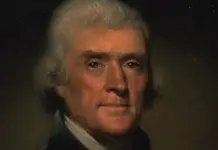Naval Weapons Station Earle is unique and a standout as a military installation in its own right, but the man for whom is is named was outstanding in many ways and well deserving of the honor of having this base that spans five municipalities named for him.
While it is apparent the base is significant and unique in many ways, it also appears that it is the only Naval installation in the United States that is named for a person, rather than the community in which it is located…think Annapolis, Norfolk, Little Creek, Fort Worth…even, in some countries outside the USA, Guantanamo Bay, Cuba.
So who was the Earle for whom the base with the gigantic pier in Leonardo and the many bunkers in Colts Neck, to say nothing of the rail and road lines that connect the two, is named?
A World War I hero and master of Munitions and Ordnance. Ralph Earle was born in Worcester, Massachusetts in 1874, and entered the Naval Academy as a cadet in August, 1892. His first duty as an ensign upon graduation in 1896 was on a gunboat, the USS Hornet, during the Spanish American War.
That’s also where he received his first medal, the Sampson Medal, earned for his role in combat operations off Cuba. A few years and a promotion later, Lt. Earle was a division officer on the battleship USS Missouri. The ship was in the Gulf of Mexico, and during a routine target practice, a flare back in one of the guns caused flames to fill not only the 12 inch turret but also the handling room below. LT. Earle was cited for bravery for his actions in rescuing survivors and in preventing further disaster to the ship in a horrific accident that claimed the lives of five officers and 27 enlisted Sailors.
Because of his expertise, Earle was selected to be a powder inspector for armament on the East Coast; he was named head of the Department of Ordnance at Annapolis and put in command of the Naval Proving Ground at Indianhead. Just before the nation entered World War I, Lt. Earle was named Chief of the Navy’s Bureau of Ordnance, the youngest officer to be named to a post of such huge responsibility. He was a standout in that position as well, and is particularly well known for two actions during that time. The North Sea Barrage, an act he conceived that virtually closed the North Sea with a mine barrage he directed be developed and laid, is credited with being one of the plans leading to an early and successful termination of the War.
A second incident involved his working with and directing the Baldwin Locomotive Works in designing and manufacturing gun mount rail cars to carry and fire guns, together with accompanying supply trains to serve them. The result of that idea meant a railway battery of guns was serving on the Western Front and carrying out bombardment operations towards the end of the war. But once a sailor, always a sailor, and Earle wanted to be back at sea. So he submitted his resignation as Bureau Chief of Ordnance and was assigned commanding officer of the battleship USS Connecticut.
After that tour, and back on land again, he commanded the Naval Torpedo Station at Newport. Then in 1925, with more than 30 years with the Navy, he retired and headed back home. Back in Massachusetts, he soon became president of the Worcester Polytechnic Institute, where once again, he made a name for his skill and dexterity in getting things done by launching an ambitious expansion plan for the Institute.
He was in the chapel addressing the students shortly after he gained approval for the expansion when he collapsed, and died within a few hours. He is buried in the Friends Cemetery in Leicester, Mass. But it wasn’t until 1973 that NAD Earle, as the weapons station was known until the following year, had a portrait to its namesake.
In a ceremony held July 19, 1973, with CAPT William F. Diehl the commanding officer of Earle, a portrait of Admiral Earle was formally dedicated and hung at the base. Painted by Frederick Ryan, a layout artist employed in the Weapons Handling Lab at Earle, Ryan had been commissioned by the Commissioned Officers’ Mess advisory board to paint the portrait.
Portraits or photographs of all the former commanding officers of Earle are displayed with dignity and pride in the main entrance foyer of C-2, the Administration Building.
Rear Admiral Earle had major accomplishments and achievements in his private life as well. His son, Ralph Earle, Jr., also attended Annapolis and rose to the rank of Vice Admiral. He saw service in the Pacific during World War II first as commanding officer of the USS Ralph Talbot, a destroyer which was part of the fleet moored at Pearl Harbor at the time of the 1941 Japanese attack; the ship was responsible for shooting down three Japanese planes and surviving the bombing. Admiral Earle also served in the Battle of Midway and the raids on Wake and Marcus Islands. Like his father, he also served at Annapolis as chief of Ordnance. He is died at age 99 in 2000 and is buried at Annapolis.



